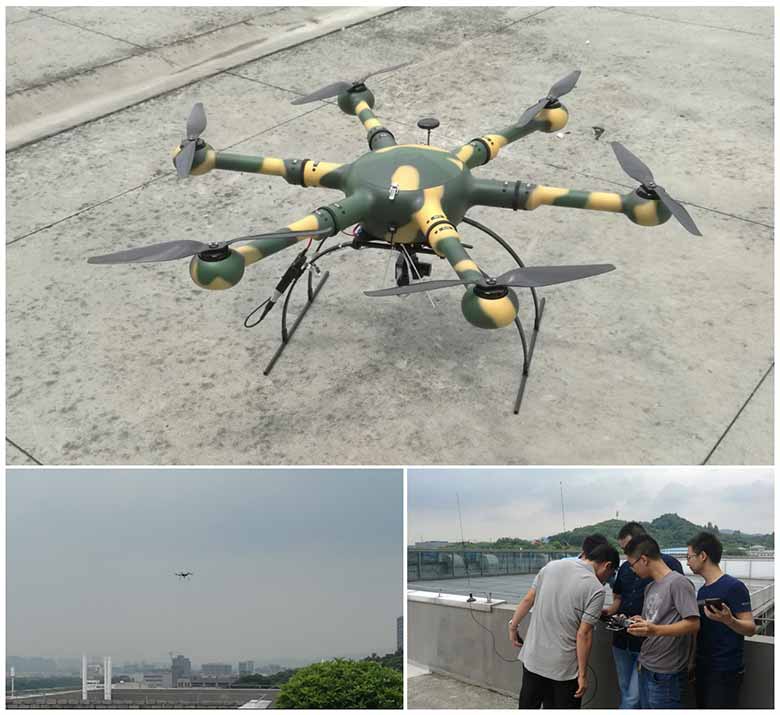The Application of COFDM Mobile Video Products in the UAV Image Transmission System
Drones are now widely used in fields such as surveying and mapping, law enforcement reconnaissance, and security monitoring. Currently, the on-board image transmission devices of drones can only meet the transmission requirements of the civilian level. When it comes to the demands of special fields such as low latency, high bandwidth, and strong security, they are still inadequate.
In response to this situation, our company has started to develop a wireless video transmission system based on COFDM technology, which can specifically meet the video transmission requirements of unmanned aerial vehicles (UAVs) in special fields. COFDM adopts orthogonal frequency division multiplexing technology, making use of relatively narrow air bandwidth (4MHz/6MHz) and strong anti-multipath interference capability to overcome the problems caused by multipath reflection and obstruction in image transmission under analog technology and conventional modulation technology. It enables high-quality image shooting and real-time non-line-of-sight transmission during high-speed movement, making it highly suitable for high-speed flying UAVs.
The currently launched product is a COFDM wireless product for unmanned aerial vehicle systems. This device measures only 90*65*23mm and weighs just 150g, making it extremely lightweight. It is easy to operate and use. The theoretical transmission distance at a height of 100 meters is 10 kilometers. The power can be customized, as well as the multi-frequency working segments. It features ultra-low video transmission latency, strong anti-interference capability, H.264 video codec, and clear, smooth, stable images without trailing.
Its logical implementation is as shown in the following figure:

The communication system consists of two parts: the transmitter on the unmanned aircraft and the receiver at the ground base station/control point. The structure is simple, providing considerable portability for rapid deployment.
In response to customer demands, the company recently conducted on-site tests of the custom-featured COFDM video transmission equipment. The results exceeded customer expectations and achieved a complete success. The on-site test results are as follows:









